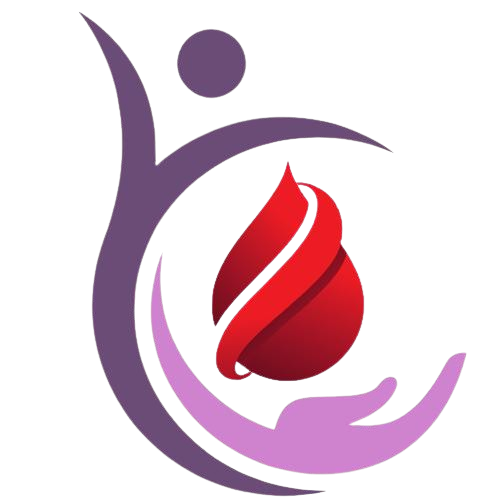Ecosprin Tablet Uses, Precautions, Side Effects, Doses
Ecosprin is a non-steroidal, anti-inflammatory medication. Ecosprin is Aspirin or Acetylsalicylic Acid. It is also an Antiplatelet Agent that reduces blood clotting in the body. It comes in different compositions and is used to treat various heart-related conditions. Sometimes a patient may take it or a doctor may give it to help with reducing pain and inflammation in certain conditions such as osteoarthritis. It comes in a range of different formulations. It should be taken only under medical supervision to minimize the chances of severe side effects.
Please note that ecosprin or aspirin is not recommended for pain relief. Paracetamol is a more suitable medication if the patient is experiencing only pain and inflammation. Ecosprin is a blood thinner.
Ecosprin Formulations
The formulation of the medication depends upon the condition for which the doctor is giving the medication to the patient.
| Formulation | Illness |
| Ecosprin 75 mg and 150 mg | Heart-related conditions |
| Ecosprin AV (aspirin + Atorvastatin) | Lower cholesterol and prevent heart disease |
| Ecosprin Gold (Aspirin, Atorvastatin, and Clopidogrel) | Prescribed after strokes or heart attacks |
Ecosprin Tablet Uses
Ecosprin is used for four main scenarios. It is used for cardiovascular benefits, prevention of blood clots in surgery, pain and inflammation, and neurological conditions as well.
Clots in Blood and Heart (Cardiovascular benefits)
Ecosprin is useful in the following –
- Preventing heart attack and strokes by thinning the blood.
- Used in the treatment of diseases such as coronary artery disease (CAD), angina (chest pain), and peripheral artery disease (PAD)
- A doctor may give it to a patient after procedures such as angioplasty, stent placement, and bypass surgery.
Ecosprin for the Treatment of Pain and Inflammation
It is used for two main types of pain and inflammation conditions. These are –
- headache, toothache, muscle pain, joint pain, and fever
- For inflammation-related conditions such as rheumatoid arthritis and osteoarthritis.
Ecosprin For Surgery and Post Surgery
Ecosprin tablets are used during surgery to prevent the formation of blood clots and a doctor may give ecosprin to a patient post-surgery to prevent conditions such as deep vein thrombosis (DVT) and pulmonary embolism (PE).
Ecosprin For Neurological Conditions
Ecosprin is known to help prevent mini-strokes which are also known as Transient Ischemic Attacks – TIAs. Further, it could possibly help in reducing the risk of Alzheimer’s disease. The effect of Ecosprin for Alzheimer’s disease is currently under research.
Ecosprin Working
Ecosprin tablets work in two ways. First, it reduces the formation of pain and inflammation chemicals in the body. It does this by inhibiting Cyclooxygenase (COX-1 & COX-2), which is responsible for the production of pain and inflammation chemicals, prostaglandins (pain and inflammation chemicals in the body).
Secondly, it blocks the production of Thromboxane A2. Thromboxane A2 is a substance that helps the platelets stick together. Lack of Thromboxane A2 helps reduce blood clotting.
Ecosprin Dosage
The dosage of Ecosprin Tablets depends upon the condition for which it is prescribed.
| Condition | Dosage |
| Heart Attack/Stroke Prevention | 75 mg – 150 mg daily |
| Pain & Fever | 325 mg every 4-6 hours |
| Post-Surgery Blood Clot Prevention | 75 mg – 150 mg daily |
| Rheumatic Fever & Arthritis | 500 mg – 1000 mg every 4-6 hours |
Ecosprin Storage
Ecosprin should be stored at room temperature of 25 degrees Celsius and kept away from direct sunlight, children, and pets.
Ecosprin Side Effects
Some of the side effects that a person may experience while taking ecosprin are as follows –
- Stomach irritation & ulcers
- An increase in bleeding instances such as nosebleeds and bruising (leaking blood from blood vessels under the skin.
- Nausea, vomiting, indigestion
- At high doses, it can cause ringing in the ears (Tinnitus).
Ecosprin has Rare and dangerous Side effects
Some of the rare (less likely to occur) but dangerous side effects to occur are –
- Gastrointestinal bleeding that results in lack/tarry stools and vomiting of blood
- A Hemorrhagic stroke with symptoms such as sudden headache, confusion, vision loss
- Allergic reactions such as rash, difficulty breathing, swelling
Ecosprin Precautions
People falling under the following category should avoid taking Ecosprin.
- Pregnant women (especially in the 3rd trimester)
- Young children below the age of 16
- People who have bleeding disorders such as Hemophilia
- Individuals with stomach ulcers, severe kidney/liver disease
- People who are allergic to the medication
Diabetic and elderly patients should take it under medical supervision as it can further aggravate or worsen their conditions. In the case of alcohol users, this medication can increase the risk of stomach bleeding.
Ecosprin Interaction With Other Medications
Ecosprin is known to interact with several other medications. It is important to know what medications Ecosprin interacts with, as these interactions can increase the severity of side effects and decrease the effectiveness of Ecosprin.
| Drug Type | Effect when combined with Ecosprin |
| Blood Thinners (Warfarin, Heparin, Clopidogrel) | Increased bleeding risk |
| NSAIDs (Ibuprofen, Diclofenac, Naproxen) | Higher risk of stomach ulcers |
| Corticosteroids (Prednisone) | Increased Gastric irritation |
| Diuretics (Furosemide, Hydrochlorothiazide) | Reduced effectiveness |
| Methotrexate (used in cancer/arthritis) | Higher toxicity risk |
In case you are already taking medications for other health conditions, discuss them with your doctor, before he prescribes you with Ecosprin.
Ecosprin Alternatives
In case a doctor can’t give a patient Ecosprin, a doctor may prescribe one of the following alternatives. These alternatives are –
- Clopidogrel (Plavix)
- Ticagrelor (Brilinta)
- Rivaroxaban (Xarelto)
- Apixaban (Eliquis)
In case of pain relief, paracetamol is preferred over Ecosprin or aspirin.
Frequently Asked Questions
Ans. If prescribed by a doctor, it can be taken daily in low doses of 75 – 150 mg.
Ans. Yes, but only under medical supervision as long-term use can increase the risk of stomach ulcer and bleeding.
Ans. Yes, it must be taken with food or milk as taking it with food helps reduce stomach irritation.
Disclaimer: The information on this blog is strictly for informational purposes. It is not a substitute for professional medical advice. Please consult your doctor before taking any medication.

